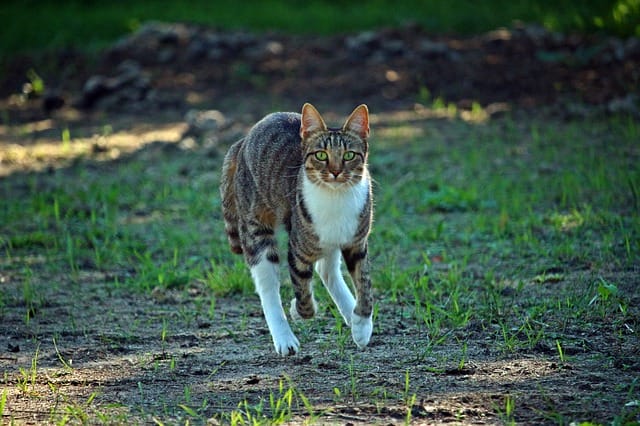
Cats are known to be curious and playful by nature, but when does the “kitten phase” end for each cat?
Young cats are constantly growing and learning new skills, but what are the different stages in a cat’s life?
The following article will answer all these questions and more by breaking down the different stages in a cat’s life.
When are cats fully grown?
The average cat becomes fully grown at around 12 to 24 months for small breeds and 3 to 4 years for large breeds.
The first key development stages are called the kitten phases, which include kittenhood and juvenility.
Cat life stages
Kitten Phases
A kitten’s entire life is said to be in the “kitten phase,” which is characterized by playfulness and curiosity.
The most common phrase used to describe a young cat or kitten that is still in the “kitten phase” is that they are simply “a mess of kittens.”
This stage typically ends around 8 months after their birth.
And this phase is the perfect time to give a kitten pet cat names.
Juvenile Phase
The next key development stage is the juvenile phase, which typically lasts until cats are 2 years old.
During this time, playfulness declines and is replaced with increased independence as cats become more focused on learning about their surroundings.
At this age, they are much too busy to pay attention to all that fluff that once captured their curiosity.
Adult Phases
Cats reach adulthood at around 2 years of age and are considered full grown cats until they reach seniority, which typically occurs between the ages of 7 to 10 years old.
Adulthood is characterized by a continuing decline in playfulness as cats become more focused on independence and self-care.
Adult cats also prefer quiet interactions with humans rather than roughhousing and running around.
Seniority Phase
Cats enter their seniority phase at the age of 7 years old, which is typically when they become less active.
As senior cats spend more time resting and sleeping throughout the day compared to previous life stages, it is important to make sure they have a comfortable place to sleep and enough food and water to last throughout the day.
Cats in this phase of their life will typically have a lower energy level and basic needs, which is why they may need some more help from humans.
Do cats stop growing at adulthood?

Cats typically reach full size at the age of 2 years old and then continue to grow throughout their entire lifetime.
This is because large breed cats may still grow into adulthood, but the size of their bones is determined much earlier on in life.
The largest cats, on the other hand, continue to grow throughout their entire lives.
This is because they have a slow metabolism and take more time to break down nutrients from their food.
All of these different cat life stages may seem overwhelming at first, but it’s important for owners to familiarize themselves with just what makes their feline friend tick.
They’ll give a better understanding of what owners can expect from their cats and how to accommodate them throughout their lives.
These biological changes may also help owners to better understand why their cats act the way they do.
After knowing all cat life stages, you should know about how cat years work for better understanding about your cute kitten.
Owning a pet is a big commitment, so it’s important to be ready for everything.
Knowing what cats of different life stages need from owners ensures that they stay happy and healthy throughout their entire lives.
- Essential Oils Safe for Cats: What Every Pet Owner Needs to Know - May 23, 2025
- Herbal Supplements for Cats: A Natural Approach to Cat Wellness - May 21, 2025
- Signs of a Healthy Cat Coat: What Every Cat Owner Should Know - May 19, 2025


GIPHY App Key not set. Please check settings